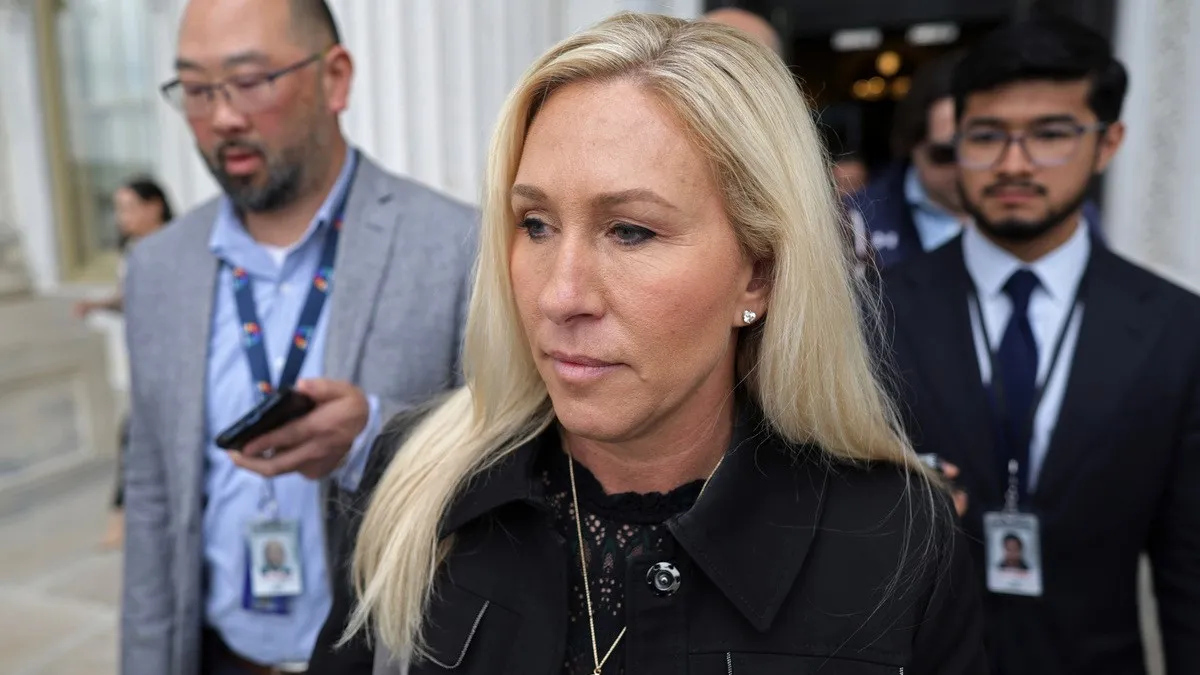
Advertisement
In the ever-unpredictable landscape of American politics, few figures embody controversy quite like Marjorie Taylor Greene. Known for her outlandish statements and divisive rhetoric, Greene’s latest target might come as a surprise to many: fellow Republican Mike Johnson. However, don’t let the semblance of agreement fool you; their clash reveals deeper fault lines within the GOP.
Greene, infamous for her conspiracy theories and inflammatory remarks, has found common ground with a wider audience in her criticism of Mike Johnson’s role as Speaker of the House. But while some may nod in reluctant agreement with her assessment of Johnson, the reasons behind her condemnation diverge sharply from mainstream perspectives.
Johnson, according to Greene, isn’t being castigated for his perceived incompetence or political allegiance but for allegedly steering the nation toward the precipice of World War Three. This accusation stems from Johnson’s support for a bipartisan $1.2 billion financial package aimed at keeping the government operational until the end of the fiscal year.
In Greene’s eyes, this package isn’t just about fiscal responsibility; it’s a dangerous game that pushes the United States closer to a global conflict. Her opposition hinges on her misinterpretation of the bill’s provisions, particularly regarding funding for the Ukraine Security Assistance Initiative. While Greene claims the bill allocates $300 million to this initiative, the reality is more complex, with military aid funding for Ukraine, Taiwan, and Israel being part of another Senate-passed bill.
Yet, Greene’s fervent crusade against Johnson isn’t solely rooted in geopolitical concerns. She also takes issue with what she perceives as the bill’s endorsement of transgender “ideology.” Despite Johnson’s own conservative stance on LGBTQ issues and his success in rallying Republican support by including provisions banning U.S. embassies from displaying Pride flags, Greene remains steadfast in her condemnation.
The rift between Greene and Johnson underscores broader tensions within the Republican Party. While Greene’s unyielding stance may appeal to her base, other Republicans view her actions as detrimental to the party’s unity and effectiveness. Critics like New York Representative Mike Lawler dismiss her motion to remove Johnson as “idiotic” and lacking in strategic foresight. Even Louisiana Representative Clay Higgins, despite his personal friendship with Greene, publicly opposes her efforts, labeling them as “abhorrent.”
The spectacle of Greene’s crusade against Johnson hints at a deeper struggle within the GOP—a battle for the party’s soul between traditional conservatives and the far-right fringe. As Republicans navigate this internal divide, the fallout from Greene’s actions serves as a reminder of the challenges they face in maintaining cohesion and relevance in an ever-evolving political landscape.
While the prospect of World War Three remains speculative, the discord within the Republican ranks suggests that a different kind of conflict is already underway—one that threatens to shape the party’s future trajectory and its role in American politics for years to come. As Marjorie Taylor Greene continues to make waves, one thing remains certain: the tumultuous journey of the GOP is far from over.
